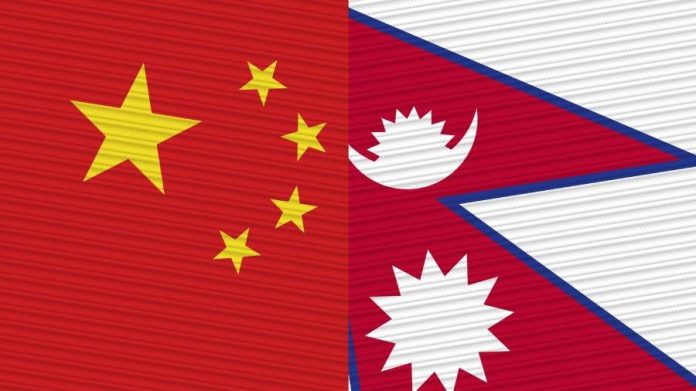After the Chinese government’s lengthy delay in releasing an economic and technical package promised nine years ago, the government of Nepal has now said “No, thanks” and is using its own resources to upgrade the Araniko Highway, according to a lawmaker and several officials.
When then-President Ram Baran Yadav was visiting China, Chinese President Xi Jinping had announced a 900 million RMB (over Rs16 billion) aid package during their meeting at Boao Forum in Hainan province on March 28, 2015. According to news reports, the assistance was supposed to help upgrade the 115 km Araniko Highway that connects Nepal with China, and to develop transport infrastructure.
“This particular Chinese aid was renewed every year by the International Economic Cooperation Coordination Division of the Ministry of Finance, but despite numerous calls, requests and meetings, we haven’t received the fund,” said Madhav Sapkota, a Maoist Centre lawmaker from Sindhupalchok district on Tuesday.
“Since the Chinese government won’t release the amount in the foreseeable future, we have allocated Rs3.6 billion from our own budget to carry out maintenance along a 26-km section of the highway and manage landslides based on the detailed project report prepared by the Department of Roads,” Sapkota said during an event organised by the Centre for Social Inclusion and Federalism (CESIF) in Kathmandu.
A large portion of the Araniko Highway, also known as Kodari Highway, was built by the Chinese government in the 1960s. Several sections of the highway were badly damaged by the April 2015 earthquakes.
Immediately after President Yadav’s visit to China, the April earthquake severely damaged the Araniko Highway, and the Chinese government subsequently started funding the Araniko Highway Long-Term Maintenance Project, which was started in August 2016 and has completed the third phase of maintenance.
“But the promised upgrade of the highway is yet to begin, and so we decided to fund the work with our own resources,” said Sapkota.
“I met then Prime Minister Pushpa Kamal Dahal, and he telephoned Chinese President Xi twice, and I also approached the Ministry of Finance and the Chinese Embassy, but still there was no progress on the aid that could transform the lives of the people of Sindhupalchok and Kavrepalanchok districts.
“The Chinese were also not updated on this issue. The Ministry of Finance, besides renewing the aid every year, did nothing. After concluding that the Chinese aid was not coming, we requested the Ministry of Physical infrastructure to allocate a budget for the upgrade of the road section. They have allocated Rs3.6 billion to upgrade the 26-kilometre section of the highway,” said Sapkota.
Sapkota stated that he has spent much of his parliamentary tenure pushing for full reopening of the Tatopani border and easing cross-border movement of goods and people. “Over the past few months, China appears to have realised that the Tatopani border point is better for trade than Keyrung,” he said. “Once the highway leading up to the border point is repaired to avoid occasional flooding and landslides, the true potential of the Tatopani border will be realised.”
He also added that after the Covid pandemic, automation by four large Chinese companies working in Nepal, and the use of loaders and machinery, have caused significant job losses for Nepalis.
During this CESIF-hosted seminar on “Mainstreaming Borderland Voices in Nepal’s Foreign Policy Discourse,” Anish Tiwari from Sindhupalchowk illustrated the stark contrast between the bustling trade on the Chinese side across the Tatopani border and the quiet on the Nepali side.
China has tightened border restrictions for Nepali goods and people and uses the borders mainly to export Chinese goods to Nepal, Tiwari noted. According to Tiwari, Nepalis living along the northern border say China’s “non-cooperation” may have stemmed from suspicions related to “Dalai Lama’s followers.”
The plight of Olangchunggola’s residents was poignantly addressed in the presentation titled “Changing Cross-border Ties Among Borderland Residents at Olangchuggola, Taplejung” by Ananda Gautam. The cross-border marital ties have significantly declined in recent years due to the irregular border, lack of basic services and infrastructures such as communication and health, and difficulties in obtaining Nepali citizenship.
Parwat Portel discussed the strategic importance and developmental potential of the border connecting Nepal with India and Bangladesh in his presentation “Status and Prospect of Trilateral Trade at Eastern Border of Nepal- Jhapa.”
Manoj Badu discussed the “Implications of India-China Geopolitics in Darchula,” highlighting how residents of Darchula are caught in geopolitical tensions between India and China due to the strategically important tri-junction in the area. Both India and China have a heavy security presence along the border, with India having an SSB outpost every three kilometres from Darchula’s Lali to Vyas Rural Municipality’s Chhangru and China having thousands of security forces along the border, noted Badu.
Nepal’s security presence along the border is almost nil compared to India’s and China’s.
Ram Bikas Chaudhary from Rupandehi discussed the “Implications of the Sarayu Canal Project for Nepal-India Borderland,” which poses environmental and existential threats to borderland communities, particularly in the Rupandehi, Kapilvastu, Dang, Banke, Bardiya, and Kailali districts.
During the panel discussion, experts said that although Nepal-India and Nepal-Tibet relations go beyond state-to-state interactions, involving more complex people-to-people relations, borderland issues are not raised in the parliament sufficiently.
Raj Kishor Yadav, Chairman of the House of Representatives International Relations and Tourism Committee, pointed out to a “fear psychosis” among Nepali representatives, as they are “immediately termed anti-national, pro-India, or Indian agents” even when they raise genuine issues.
On the northern border, member of the House of Representatives Liladevi Boikhim Limbu noted that “although the border points are technically open, cross-border movement and trade are still not fully operational” at a level Nepal and Tibet have traditionally enjoyed.
“We can only restore it with a concrete effort of all stakeholders, state mechanisms, and policymakers,” she added.
On the sensitivities of the Nepal-India border, another lawmaker, Chanda Chaudhary, said, “Nepali policymakers, leaders, and officials should understand the intricacies and complexities of the deep-rooted cross-border relations, which cannot be undermined by a few elements in Kathmandu.”








































